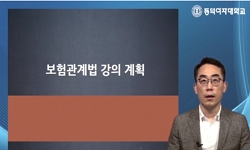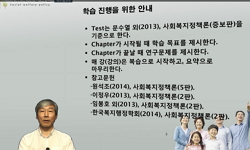국가의 국민에 대한 보건의무를 규정한 헌법 제36조 제3항의 규정과 국민건강 보험법을 근거로 설립된 국민건강보험공단은 한정된 재원으로 국민의 보건향상에 기여하고 있다. 그러나 현실...
http://chineseinput.net/에서 pinyin(병음)방식으로 중국어를 변환할 수 있습니다.
변환된 중국어를 복사하여 사용하시면 됩니다.
- 中文 을 입력하시려면 zhongwen을 입력하시고 space를누르시면됩니다.
- 北京 을 입력하시려면 beijing을 입력하시고 space를 누르시면 됩니다.

임의비급여진료행위병원에대한민사적쟁점검토 - 보험자의 채권자대위권 행사 가부를 중심으로 - = Reviewing Civil Issues for Arbitrary Non-wage Medical Practice Hospitals - Focusing on the insurer s decision to exercise its creditor authority -
한글로보기https://www.riss.kr/link?id=A106419507
- 저자
- 발행기관
- 학술지명
- 권호사항
-
발행연도
2019
-
작성언어
-
-
주제어
국민건강보험법 ; 건강보험제도 ; 급여 ; 비급여 ; 임의비급여 ; 사적자치 ; 보험자 ; 피보험자 ; 실손의료보험 ; 실손의료비 ; 불법행위 ; 손해배상청구 ; 부당이득반환 ; 채권자대위 ; 특정물채권 ; 금전채권 ; National Health Insurance Act ; Health Insurance System ; Salary ; Non-payment ; Arbitrary Benefit ; Private SelfGoverning ; Insured ; Lossy Medical Insurance ; Lossy Medical expenses ; Illegal Activities ; Claims for damages ; Reimbursement of Unfair Benefit ; Debt for creditors ; Specific Property Bonds ; Money Bonds
-
KDC
360
-
등재정보
KCI등재
-
자료형태
학술저널
-
수록면
97-135(39쪽)
-
KCI 피인용횟수
0
- DOI식별코드
- 제공처
-
0
상세조회 -
0
다운로드
부가정보
국문 초록 (Abstract)
국가의 국민에 대한 보건의무를 규정한 헌법 제36조 제3항의 규정과 국민건강 보험법을 근거로 설립된 국민건강보험공단은 한정된 재원으로 국민의 보건향상에 기여하고 있다. 그러나 현실적으로 모든 의료서비스에 소요되는 비용을 공단에서 부담할 수 없는바, 국민건강보험법은 요양급여에 대하여는 공단과 환자가 각 부담하도록 하되, 업무 및 일상에 지장이 없는 의료행위에 대하여는 비급여로 구별하여 이 부분에 한하여 환자와 의료기관 사이의 합의에 따라 의료행위를 할 수 있는 사적자치(私的自治) 영역으로 두고 그 진료비에 대하여는 환자에게 전액 부담하도록 하고 있다. 위와 같이 공단이 모든 의료비를 보장하는 것이 아니라 진료비 중 일부만 보장하고, 나머지 진료비는 환자들이 부담해야 하기 때문에 환자들은 개인적으로 보험사와 진료비를 보장하는 보험계약을 체결하여 자신의 부담을 민영 보험사에게 맡기고 있다. 현재 우리나라 국민의 3분의 2 가량이 가입하고 있는 실손보험은 국민보건 향상이라는 역할에 비추어 볼 때 강제보험은 아니지만 매우 중요한 보험임에는 틀림이 없다. 한편, 정부에서는 건강보험의 보장범위를 확대하는 정책을 실시함으로 건강보험에서 비급 여가 줄어들어들게 되자 의료기관은 실손보험 가입자를 상대로 과잉 과다진료를 하고 있다.이렇게 과잉 과다진료, 임의비급여 진료를 제공함으로 수익을 창출하고자 하는 의료계의 이해관계와 이러한 과잉 과다진료 및 임의비급여 진료를 적극적으로 이용하고자 하는 환자들의 이해관계가 맞아 떨어져 실손보험의 지급률이 매우 가파르게 오르는 등 심각한 상황에 직면 하고 있다. 일부 의료기관과 환자 등 사회 구성원간 조금씩 자행되는 도덕적 해이가 결국 보험자 뿐 아니라 결국은 다른 선량한 보험가입자와 전체 국민에게 큰 부담으로 돌아가게 되는 것이다. 이러한 문제점을 바탕으로 본고에서는 실손의료보험자가 환자인 피보험자에게 보험금으로 지급한 임의비급여 진료비를 의료기관으로부터 직접 환수하는 방안에 대한 법적 구성을 어떻게 할 것인지가 문제된다. 먼저, 보험자가 직접 의료기관을 상대로 불법행위를 원인으로 손해배상청구를 할 수 있는지 여부를 살펴본다. 대상판결의 상고심에서는 의료기관의 행위와 보험자의 손해 사이에 인과관계가 없다는 이유로 불법행위책임을 부정하였다. 그러나 실손보험의 가입자 수가 다수 이고, 의료기관에서 실손보험 청구를 위해 필요한 각종 서류를 발급해 주는 등 진료를 받은 환자가 실손의료비를 청구하리라는 사정을 충분히 인지할 수 있는 점 등에 비춰볼 때 인과 관계를 부정할 수 없을 것이다. 이러한 점에서 대상판결의 상고심 결론에는 동의하기 어렵다. 다음으로, 채권자대위권을 근거로 보험자가 직접 환자인 피보험자의 권리를 대위하여 행사하는 방안을 적극 검토해 볼 필요가 있다. 이에 대하여 채권자대위권의 태동적 한계를 언급하면서 강제집행을 위한 보조수단으로서 채무자의 책임재산으로 충분히 변제 자력을 없는 경우에만 활용할 수 있도록 제한적으로 해석하는 입장이 있다. 그러나 우리 대법원 판결 및일본 최고재판소 판결은 채권자대위권의 독자적인 기능을 인정하여 일정한 경우에는 채무자의 변제자력, 책임재산 유무와 관련 없이 인정할 수 있다고 판단하고 있다. 이러한 판단은 채권자의 채권이 특정물 채권인지, 금전채권인지 여부에 따라 달라질 것은 아니라고 본다. 본고의 대상판결에서도 보험자에서 환자인 피보험자를 거쳐 의료기관에 지급된 금전이 결국 보험자로 다시 반환되어야 하는 상황이라면 이해관계가 없거나 때로는 의료기관의 임의비급여 행위에 가담하여 보험자에게 손해를 가한 피보험자(환자)를 거치지 않고 채권자인 보험자 에게 바로 반환할 수 있는지가 쟁점이 되었다. 결론적으로 대상판결은 보험자에게 민법에 규정된 채권자대위권 행사를 인정함으로써 향후 유사사안에 대해 방향성을 제시한 의미있는 판결이라 할 것이다.
다국어 초록 (Multilingual Abstract)
The National Health Insurance Corporation (NHIC), established on the basis of the provisions of Article 36 Paragraph 3 of the Constitution which stipulates health obligations to the people of the country and the National Health Insurance Act, contribu...
The National Health Insurance Corporation (NHIC), established on the basis of the provisions of Article 36 Paragraph 3 of the Constitution which stipulates health obligations to the people of the country and the National Health Insurance Act, contributes to the improvement of the health of the people with a set amount of funds. However, in reality, the National Health Insurance Act requires that the NHIC and the patient shoulder the cost of all medical services, while the NHIC and the NHS Act define work and daily medical activities as non-wage and place them in a private self-governing area where patients and medical institutions can perform medical activities in accordance with the agreement between the patient and the institution, and pay the entire cost of medical treatment. As above, patients have personally signed insurance contracts with insurance companies to guarantee their medical expenses to private insurers because the corporation guarantees not all but partial medical expenses, and the patients must pay the rest. Currently, about two-thirds of the nation s people are subscribed to loss insurance, suggesting that although it is not compulsory, it must be an essential insurance policy given its role in improving people’s health nationwide. Meanwhile, as the government implemented a policy to expand the coverage of health insurance, non-wage benefits were reduced from health insurance and medical institutions gave excess medical treatment in loss insurance as a target. The medical community s interest in generating revenue by providing excessive medical and random benefit care align with patients interest in actively using such over and excessive medical care and random benefit care, resulting in a rapid rise of insurance coverage and subsequently leading to an even more serious situation. Such moral hazard, done little by little among medical institutions and patients, will eventually return to the burden of other good policyholders and the entire public, not just the insurers. Based on these problems, this paper focuses on how to recover the random non-benefit medical expenses paid by the loss-making health insurer to the insured patient from the medical institution. First, check whether an insurer can claim damages against a medical institution for the cause of the illegal act. The appeal of the decision denied responsibility for illegal activities on grounds that there was no causal relationship between the actions of the medical institution and the loss of the insurer. However, the causal relationship cannot be denied, given the large number of lost-loss insurance subscribers and given that the medical institution can fully recognize that the patient who received the medical treatment will be charged for the loss-making medical expenses, such as issuing various documents necessary for the claim for loss-making insurance. In this respect, it is difficult to agree on the appeal conclusion of the target judgment. Next, it is necessary to consider actively exercising on behalf of the insured s rights, which are directly patients, on the basis of creditor rights. In this vein, there is a limited interpretation on the creditor s right to use it only when the debtor s responsible property does not have sufficient resources to reimburse them as an aid to the execution of the debtor s obligation, referring to the dynamic limit of creditor s authority. However, the Supreme Court and the Japan s Supreme Court ruling have recognized the independent function of the creditor s authority and, in certain cases, can be acknowledged regardless of the debtor s ability to repay or hold responsible property. This judgement is not considered to differ based on whether a creditor s bond is a specific commodity bond or a monetary bond. In this case, the issue was whether the money paid to the medical institution through the insurer, which had been directly paid by the insured who is the patient, should be returned dir
목차 (Table of Contents)
- Ⅰ. 들어가며 Ⅱ. 임의비급여의 문제점 Ⅲ. 대상판결의 검토 Ⅳ. 보험자의 채권자대위 가능 법리의 검토 Ⅴ. 마치며
- Ⅰ. 들어가며 Ⅱ. 임의비급여의 문제점 Ⅲ. 대상판결의 검토 Ⅳ. 보험자의 채권자대위 가능 법리의 검토 Ⅴ. 마치며
참고문헌 (Reference)
1 여하윤, "채권자대위권(action oblique)에 관한 프랑스에서의 최근 입법 동향" 한국재산법학회 34 (34): 169-191, 2018
2 박태신, "임의비급여 허용요건에 관한 검토" 대한의료법학회 13 (13): 11-38, 2012
3 배병일, "임의비급여 진료행위에 관한 민사법적 검토" 대한의료법학회 18 (18): 75-103, 2017
4 정영철, "원외처방 요양급여비용 환수의 공법적 고찰 ― 대판 2013. 3. 28. 선고 2009다78214 판결을 중심으로 ―" 행정법이론실무학회(行政法理論實務學會) (36) : 165-195, 2013
5 김선정, "요양급여대상인 진단비를 비급여대상으로 처리한 병원에 대하여 보험회사가 지급한 보험금 반환을 청구할 수 있는지 여부" 479 : 2019
6 현두륜, "요양급여기준의 법적 성격과 요양급여기준을 벗어난 원외처방행위의 위법성 - 대법원 2013. 3. 28. 선고 2009다78214 판결을 중심으로 -" 대한의료법학회 15 (15): 123-164, 2014
7 명순구, "실손의료보험과 비급여 의료비 심사제도 도입의 필요성- 금융분쟁조정위원회 2016. 5. 24. 결정 제2016-12호에 대한 평가를 겸하여 -" 한국경영법률학회 27 (27): 293-333, 2016
8 박성민, "실손보험 연구" 경인문화사 2019
9 박세민, "보험법" 박영사 2019
10 김은경, "보험계약법" 보험연수원 2016
1 여하윤, "채권자대위권(action oblique)에 관한 프랑스에서의 최근 입법 동향" 한국재산법학회 34 (34): 169-191, 2018
2 박태신, "임의비급여 허용요건에 관한 검토" 대한의료법학회 13 (13): 11-38, 2012
3 배병일, "임의비급여 진료행위에 관한 민사법적 검토" 대한의료법학회 18 (18): 75-103, 2017
4 정영철, "원외처방 요양급여비용 환수의 공법적 고찰 ― 대판 2013. 3. 28. 선고 2009다78214 판결을 중심으로 ―" 행정법이론실무학회(行政法理論實務學會) (36) : 165-195, 2013
5 김선정, "요양급여대상인 진단비를 비급여대상으로 처리한 병원에 대하여 보험회사가 지급한 보험금 반환을 청구할 수 있는지 여부" 479 : 2019
6 현두륜, "요양급여기준의 법적 성격과 요양급여기준을 벗어난 원외처방행위의 위법성 - 대법원 2013. 3. 28. 선고 2009다78214 판결을 중심으로 -" 대한의료법학회 15 (15): 123-164, 2014
7 명순구, "실손의료보험과 비급여 의료비 심사제도 도입의 필요성- 금융분쟁조정위원회 2016. 5. 24. 결정 제2016-12호에 대한 평가를 겸하여 -" 한국경영법률학회 27 (27): 293-333, 2016
8 박성민, "실손보험 연구" 경인문화사 2019
9 박세민, "보험법" 박영사 2019
10 김은경, "보험계약법" 보험연수원 2016
11 강봉석, "민사판례연구 24권" 한국민사판례연구회, 박영사 2002
12 김형배, "민법학강의" 신조사 2016
13 지원림, "민법강의" 홍문사 2019
14 김준호, "민법강의" 법문사 2019
15 박세민, "국민건강보험의 보장률 제고를 위한 비급여 의료비 관리 개선 방향에 대한 연구" 한국보험학회 (114) : 1-34, 2018
16 이인영, "국민건강보험법상 임의비급여의 개선방안 연구" 고려대학교 2016
17 송명호, "국민건강보험공단의 요양급여비용 환수과정에 있어서 법적용 정밀성에 관한 검토-특히 임의비급여를 중심으로-" 대한의료법학회 13 (13): 45-72, 2012
18 선정원, "과잉진료와 과잉원외처방으로 인한 부당이득의 환수처분과 손해배상청구" 행정법이론실무학회(行政法理論實務學會) (29) : 1-34, 2011
19 정영철, "공법적 시각에서 본 임의비급여의 제한적 허용의 쟁점 -대판 2012. 6. 18. 선고 2010두27639․27646 전원합의체 판결을 중심으로-" 법학연구원 (40) : 245-274, 2012
20 현두륜, "건강보험에 있어서 의사와 환자 간의 법률관계" 대한의료법학회 8 (8): 2007
21 工藤佑厳, "民法判例百選Ⅱ" 2018
22 潮見佳男, "債権総論" 新山社 2019
동일학술지(권/호) 다른 논문
-
헬스케어서비스 활성화를 위한 법정책 과제 - 빅데이터에 기반한 개인의료정보의 활용을 중심으로 -
- (사)한국보험법학회
- 김영국(Kim, Young-Kook)
- 2019
- KCI등재
-
금융상품 불완전판매 방지를 위한 법적 과제 - 보험상품 판매를 중심으로 -
- (사)한국보험법학회
- 이성남(Lee, Sung Nam)
- 2019
- KCI등재
-
입원보장보험에서 ‘입원의 정의’ 규정과 관련된 쟁점 고찰
- (사)한국보험법학회
- 조규성(Cho, Gyu Seong)
- 2019
- KCI등재
-
보험약관상 보험금 지급사유인 ‘장해상태’의 법적 의미에 관한 연구 - 대법원 2014. 7. 24. 선고 2013다43956(본소), 43963(반소)판결의 평석을 중심으로 -
- (사)한국보험법학회
- 임호산(Lim, Ho San)
- 2019
- KCI등재





 KCI
KCI 스콜라
스콜라







